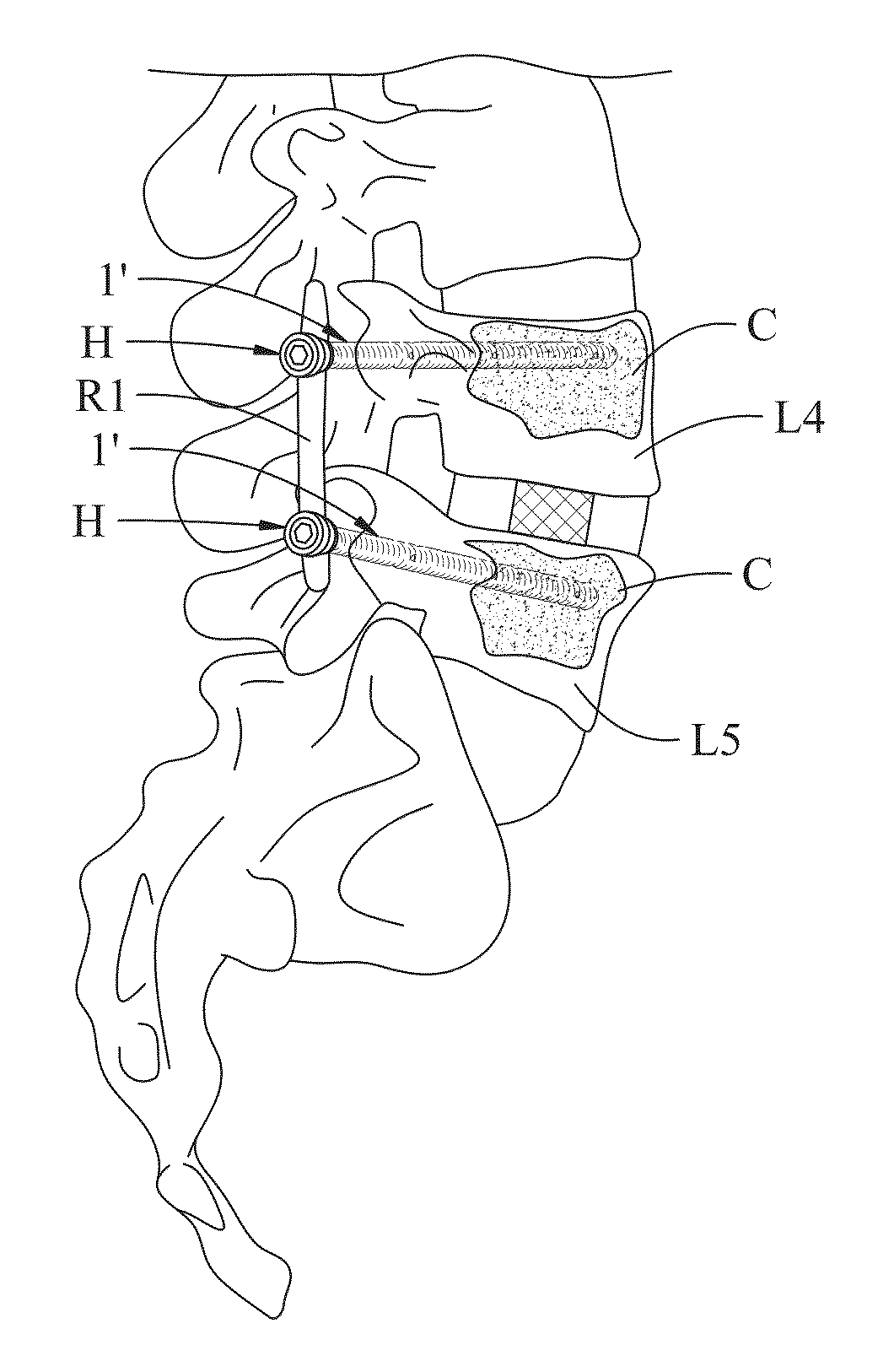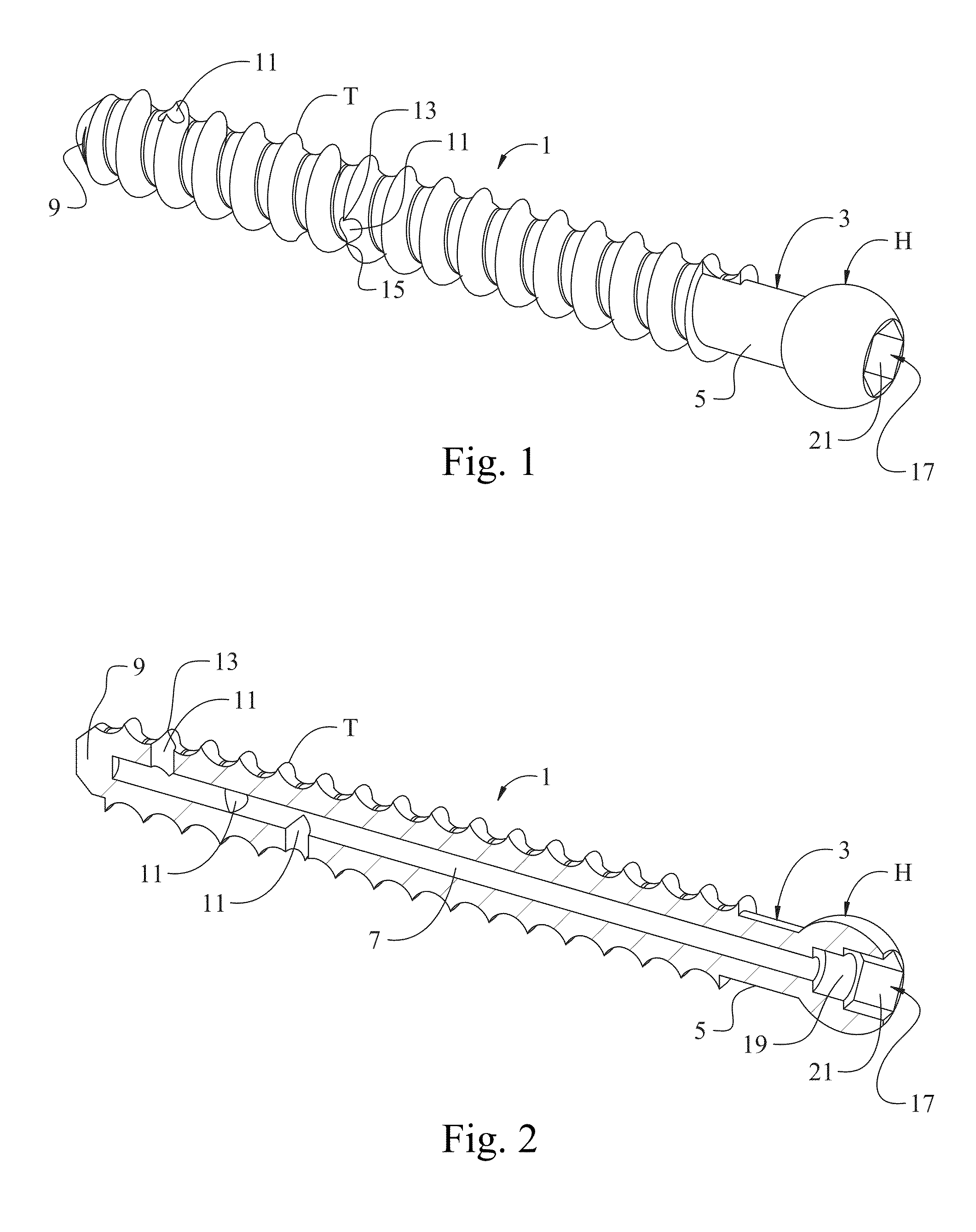Fenestrated bone screw and method of injecting bone cement into bone structure
a bone screw and bone cement technology, applied in the field of fenestration pedicle bone screws, can solve the problems of lessening the purchase of bone screws in such bone structures, reducing bone quality, and reducing bone quality
- Summary
- Abstract
- Description
- Claims
- Application Information
AI Technical Summary
Benefits of technology
Problems solved by technology
Method used
Image
Examples
Embodiment Construction
[0048]Referring now to FIG. 1, a fenestrated / cannulated bone screw of the present disclosure, and more particularly a pedicle screw, is illustrated in its entirety by reference character 1. Screw 1 has a part-spherical head H for the attachment of a poly-axial saddle (not shown) that is conventionally used in spinal surgery. However, those skilled in the art will recognize that heads H of different designs, shapes, and purposes may be used in conjunction with the screw of the present disclosure. Screw 1 has a shank, as generally indicated at 3, having bone threads T formed or machined on a substantial length of the shank. As indicated at 5, the portion of the shank proximate head H may be free of threads T, however, the threads may extend proximate the head H.
[0049]More particularly, screw 1, as shown in FIG. 2, is a blind end cannulated screw having a cannula 7 extending from head H to the distal end of the screw, but where the cannula 7 does not extend through the tip 9 of the scr...
PUM
 Login to View More
Login to View More Abstract
Description
Claims
Application Information
 Login to View More
Login to View More - R&D
- Intellectual Property
- Life Sciences
- Materials
- Tech Scout
- Unparalleled Data Quality
- Higher Quality Content
- 60% Fewer Hallucinations
Browse by: Latest US Patents, China's latest patents, Technical Efficacy Thesaurus, Application Domain, Technology Topic, Popular Technical Reports.
© 2025 PatSnap. All rights reserved.Legal|Privacy policy|Modern Slavery Act Transparency Statement|Sitemap|About US| Contact US: help@patsnap.com



